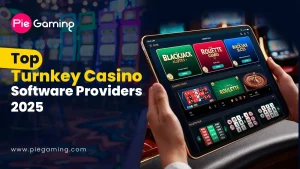Beyond the Spin: How Accessibility is Reshaping Modern Gambling Platforms

The digital world is, slowly but surely, becoming a more inclusive place. And honestly, the online gambling industry is no exception. For far too long, players with disabilities faced a clunky, frustrating experience—if they could access the games at all.
But here’s the deal: that’s changing. Modern gambling platforms are finally waking up to the fact that accessibility isn’t a niche feature; it’s a fundamental part of good design. It’s about building a digital space where everyone has a fair shot at the action. Let’s dive into the features that are making this a reality.
More Than Just Ramps: The Digital Playground
Think of online accessibility like building a physical casino with ramps, wide aisles, and braille on the signs. Only here, the architecture is made of code. The goal is the same: to remove barriers. For players with visual, auditory, motor, or cognitive impairments, these digital “ramps” are the difference between participation and exclusion.
For the Eyes: Visual and Auditory Assistance
This is often the first thing people think of. And for good reason. How do you convey the thrill of a slot machine’s visuals or the critical info on a live dealer table if you can’t see it well—or at all?
Well, platforms are answering with:
- Screen Reader Compatibility: This is a big one. Properly coded sites allow software like JAWS or NVDA to read out button labels, game states, and account information. It turns visual data into speech.
- High Contrast Modes & Color Adjustments: For users with low vision or color blindness, the ability to switch to a stark black-and-white theme or change color schemes is a game-changer. It reduces eye strain and makes text pop.
- Scalable Interfaces: Ever tried to hit a tiny “spin” button on a mobile screen with trembling hands? It’s a nightmare. The ability to zoom in on the page or enlarge text without breaking the layout is crucial.
- Text-to-Speech and Closed Captioning: In live casino games, where the dealer’s announcements are key, closed captions ensure no one misses a beat. Some platforms are even experimenting with text-to-speech for chat functions.
For the Hands: Motor and Dexterity Adaptations
This area is, you know, often overlooked. But for players with limited dexterity, Parkinson’s, or arthritis, the standard mouse-and-keyboard combo can be an impossible hurdle.
The solutions are both high-tech and beautifully simple:
- Full Keyboard Navigation: Every single function—from logging in to placing a complex sports bet—should be accessible using only the Tab, Enter, and Arrow keys. No mouse required.
- Voice Control Integration: Imagine saying “spin,” “hit,” or “place bet on red” and the platform just… listens. Compatibility with tools like Windows Voice Recognition or Dragon NaturallySpeaking is becoming a gold standard for motor accessibility in iGaming.
- Customizable Timeouts: Rushing a player is bad UX. Rushing a player with a motor disability is exclusionary. Adjustable session timers give everyone the time they need to make decisions without pressure.
- Larger, Spaced-Out Buttons: A simple but effective fix. Reducing the precision needed to click a target makes the experience less frustrating and more enjoyable for everyone, really.
The Tech Behind the Curtain: WCAG and Why It Matters
So, what’s driving this shift? A lot of it comes down to the Web Content Accessibility Guidelines (WCAG). This is the international standard for web accessibility, and it’s built on four principles: content must be Perceivable, Operable, Understandable, and Robust—the POUR acronym.
Platforms aiming for WCAG 2.1 AA compliance (a common target) are essentially baking these principles directly into their DNA. It’s not just a checklist; it’s a different way of thinking about design from the ground up.
A Snapshot of Common Features
| Feature Category | Example Implementations | Primary User Benefit |
| Visual | Screen reader support, high contrast mode, text resizing, color blindness filters | Access for blind and low-vision users |
| Auditory | Closed captions for live streams, visual alerts for sounds | Access for deaf and hard-of-hearing users |
| Motor | Keyboard navigation, voice control, sticky keys, extended timeouts | Access for users with limited dexterity or mobility |
| Cognitive | Simple language options, clear consistent layouts, ability to pause animations | Reduced cognitive load for easier understanding |
The Ripple Effect: Why This is Good for Everyone
Here’s the beautiful part. When you design for accessibility, you often end up designing a better product for everyone. That high-contrast mode? It’s easier to read in bright sunlight. The voice control feature? It’s handy when you’re cooking dinner and want to check your bet slip. Clear, simple language helps non-native speakers and anyone having a tired, brain-fog kind of day.
It’s a universal design win. By focusing on the needs of a few, we create a smoother, more intuitive experience for the many. It’s just good business, sure, but it’s also the right thing to do.
The Road Ahead… and the Responsibility
We’re not at the finish line yet. Not even close. Some platforms are still lagging, treating accessibility as an afterthought. The next frontier? Honestly, it’s in the games themselves. Ensuring that the flashy, complex slot games and intricate table games are built with accessibility from day one, not just the platform lobby.
And this leads to a deeper thought. The very essence of gambling is built on the idea of a level playing field—of chance, of luck. Shouldn’t the platform itself reflect that same principle? Creating a space where access isn’t a matter of luck, but a matter of course. That’s the real jackpot.
In the end, an accessible platform is more than just a compliant one. It’s a welcoming one. It sends a clear message: you are invited to play.







